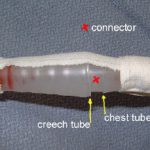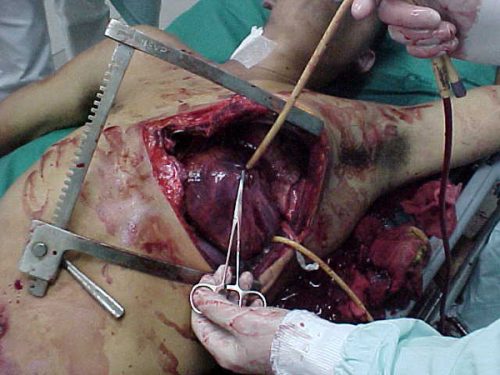In the late 1980’s, when we started the work that would be published in the first damage control paper from Penn, we used the vacuum pack dressing. This was first described in a paper from the University of Tennessee at Chattanooga in 1995. Prior to that, the so-called Bogota bag was the usual technique. This consisted of slicing opening up a sterile IV bag (either the standard 1 liter or the urology 3 liter bag for big jobs) and sewing it into the wound. This worked, but it freaked out the nurses, who could see the intestines through the print on the clear plastic bag.
The vacuum pack was patient friendly, with a layer of plastic on the bottom, some absorbent towels in the middle with a drain in place to remove fluid and apply suction, and an adherent plastic layer on top to keep the bed clean. As you can imagine, this was a little complicated to apply correctly. One misstep and things stuck to the bowel or leaked out onto the bed.
In the past few years, a commercial product was developed that incorporated all these principles and was easy to apply. This is the KCI ABThera (note: I have no financial interest in KCI or this product; I just wish I had invented it). The only downside is that there is a small learning curve when first using this product.
The video above shows a demonstration of the application on an abdominal mannikin. It is not as slick as the company videos, but I think it’s more practical, with some good tips.
References:
- Damage control: an approach for improved survival in exsanguinating penetrating abdominal injury. J Trauma 35(3):375-382, 1993.
- Temporary closure of open abdominal wounds. Am Surg 61(1):30-35, 1995.




